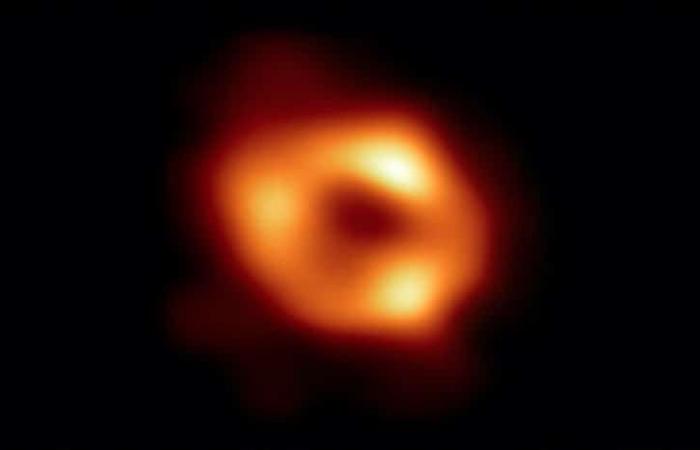Astronomers from the National Autonomous University of Mexico may have solved the mystery surrounding bursts of gamma radiation from Sagittarius A* (Sgr A*), the supermassive black hole at the heart of the Milky Way. Gamma rays had indeed been detected in 2021, but their precise origin still remained unknown.
An unusual sighting
Sagittarius A* is located at the heart of our galaxy, the Milky Way. You will find it at a distance of approximately 26,700 light years from Earth in the direction of the constellation Sagittarius. This supermassive black hole, which spins almost as fast as possible, has a mass equivalent to approximately four million times that of the Sun.
This fascinating object continues to be a favored study target for astronomers seeking to understand the complex mechanisms surrounding supermassive black holes and their interaction with their galactic environment. The recent discovery of emissions from periodic gamma rays from the Sgr A* region adds a new layer of mystery and excitement to our understanding of this enigmatic cosmic object.
And for good reason, contrary to the popular image of black holes which suck up everything in their path, including light, Sagittarius A* is also considered “calm” compared to other supermassive black holes. The object in fact evolves in a relatively inactive state, feeding on matter at a very slow pace compared to other similar black holes. For this reason, scientists have remained a bit perplexed about the source of these gamma rays.
A “drop” of material
Using data from the Fermi Gamma-ray space telescope, researchers finally identified a periodicity in these emissions. According to the team, they occur approximately every 76.32 minutesin harmony with the X-ray pulses observed nearby. To explain this phenomenon, the researchers propose a fascinating explanation: the gamma rays do not come directly from Sgr A* itself, but rather from a “drop” of gas swirling around the black hole at nearly a third the speed of light. This high-speed drop of matter would therefore periodically emit light at different wavelengths during its orbit around Sgr A*.
How can we explain the formation of such a structure?
The formation of a “drop” structure of swirling gas near a supermassive black hole like Sgr A* is a complex process that can be influenced by several factors.
On the one hand, recall that supermassive black holes are often surrounded by an accretion disk formed of gas and dust which gradually falls towards the black hole under the effect of gravity. This accretion disk can be turbulent, with compression and rarefaction zones which create conditions conducive to the formation of localized structures. On the other hand, the strong gravity of the black hole also generates tidal forces which distort matter that approaches too closely. Again, these forces can lead to the formation of droplets of matter at specific distances from the black hole, creating areas where matter accumulates and swirls.
Let us also remember that magnetic fields play a crucial role in the interaction between the black hole and the surrounding matter. The latter can then influence the distribution of matter and create areas of concentration which give rise to particular structures. Finally, the presence of other stars, gas clouds or massive objects near the black hole can disrupt the movement of matter and contribute to the formation of particular structures.
For the moment, researchers are not very sure of the mechanism responsible for this famous drop of matter accelerated to relativistic speeds. Still, this discovery calls into question the idea that gamma rays from supermassive black holes come solely from a turbulent accretion disk generated by the gravitational influence of the black hole. The results could thus provide crucial information about the environments surrounding supermassive black holes, especially those that are less voracious like Sgr A* at the center of the Milky Way.
This discovery could also help elucidate the role of interactions between the black hole and surrounding matter particles in the production of high-energy radiation. The researchers believe that these drops of material could collide with each other, thus releasing significant quantities of energy in the form of gamma rays. These phenomena offer a rare opportunity to observe in real time the processes of matter dynamization in extreme environments, and thus to better understand how black holes influence the evolution of their host galaxies.






